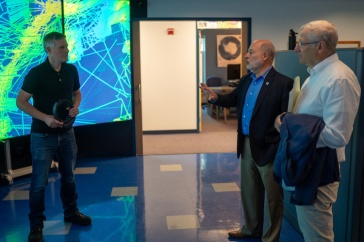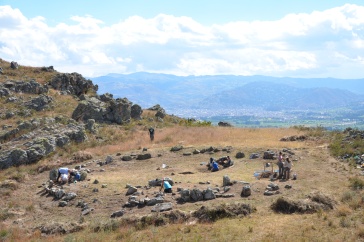
When Laurent ’43 and Ann Miller ’46 Morin arrived in Algiers for their first posting with the Foreign Service in 1948, the captain of their ship had only one request: “When we were coming into port, he said, ‘Will you please take down the diaper line?’” Laurent recalls.
The Morins and their infant daughter had spent 30 days aboard a Norwegian tramp steamer, living in the ship’s sick bay and using salt water to wash their clothes and their daughter’s diapers. “That gave us a very good introduction to the Foreign Service,” Ann says. “After that it couldn’t be anything but up.”
For the next 50 years, the Morins traveled the world, with postings at U.S. embassies in France, Japan, and Iraq, along with stints in Washington, D.C. The couple, who met at UNH and married at the end of Ann’s freshman year, were on the front lines of American diplomacy as Europe recovered from World War II, upheaval rocked the Middle East, and the United States prepared for the Cold War to turn hot. “He promised me he would take me to see the world, and so he did,” Ann says.
Laurent held various embassy posts while Ann worked as a teacher and principal at embassy schools, but embassy living was not easy. In Algiers, they lived in a hotel for three months while searching for housing, able to afford only one meal a day from room service, which they split. But they also attended opulent state dinners, a sharp contrast to their daily routines. “It was really rather schizophrenic,” Ann says. “On the outside, it was glamorous ... but the living was so tough that very few people would choose such a life overseas.”
When the Morins arrived in Baghdad in 1960, the country was in upheaval. Then-Prime Minister Abd al-Karim Qasim had seized power in 1958, but his grip on the country was tenuous. The Morins lived through uprisings and bombardments; tanks were stationed at each end of their street, and Ann remembers walking under the turrets on her way home. When Qasim was deposed in 1963, their daughter Ann Morin Levine ’72, then a teenager, was stranded outside Baghdad until a taxi driver shepherded her through the city and across the Tigris River to safety.
Changes on the international stage had repercussions at home. In 1970, Laurent moved to the Office of Emergency Preparedness, where he helped shape national policy on disasters small and large, from fuel shortages to nuclear war. Instead of touring embassies, he visited top-secret hideaways in the mountains of Virginia where federal and military personnel would gather in the event of nuclear war.
“I was one of the ones who had a designated place that I was supposed to go (to),” he says. “If the bombs were going off in Washington, I was supposed to leave my family and go to Virginia. It was horrible stuff we used to worry about in those days.”
Ann played her own role in shaping American diplomacy. In the 1980s, she began work on an oral history of the three dozen women who served as U.S. ambassadors between the Roosevelt and Reagan administrations. For 10 years, she compiled information and conducted interviews with the ambassadors, including Shirley Temple Black.
“I built up this big dossier on all these women—what they did, what they were like,” Ann says. The book, Her Excellency, became a part of the State Department’s ambassador-training curriculum and served as a foundation for the Association of Diplomatic Studies and Training’s oral history project.
There are few places the Morins and their family have not been—including outer space. Their son, Lee Morin ’74, was selected by NASA to become an astronaut in 1996. Ann and Laurent watched from home in 2002 as Lee completed two spacewalks totaling 14 hours at the International Space Station. In his own way, the younger Morin was carrying on the family tradition: traveling boldly into uncertain territory and leaving on it his own indelible mark.
Originally published in UNH Magazine—Winter 2014 Issue
-
Written By:
Larry Clow '12G | UNH Cooperative Extension
















































